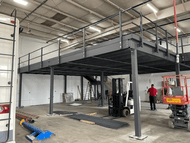The Pros and Cons of Mezzanines
Posted by Audrey Goedegebuure on 10th Jun 2024
Are you completely out of warehouse space but still have more inventory to store? Look up! Your solution may just be overhead. Mezzanines are often the answer in creating much needed storage space. A mezzanine is a partial floor that is installed between the ground and ceiling. These storage solutions are used to increase the amount of space, by creating a second level for storage. Mezzanines can be opened or enclosed, creating unique ways that this space can be built. Let’s dive into how these innovative structures differ and how each can creative expansive opportunities.
Free Standing Mezzanine
Pros
- Fully customizable in size
- Flexible column, stair, and pallet drop gate placement
- Lower level is independent of upper level, allowing flexibility in storage media on each level (unlike a Catwalk mezzanine)
- Can clear span 20’+ using beams and C‐section (or larger spans if using bar joist and truss gurder) before another column is needed
- Free Standing, bolt together design which can offer a significant tax depreciation advantage than a structure attached to the building
- Sprinklers can be recessed in the joists to allow for more lower‐level clear height
- Can be designed for a variety of live load (psf) requirements
- Variety of decking options (Resin Board, Bar Grating, Floor Plate, Concrete, or Specialty Grating (plank grating or similar))
Cons
- More expensive than Full‐Mat and Catwalk
- Joist height is larger (12”+) than Full‐Mat and Catwalks (under 4” in most cases) so not ideal when building has limited clear height
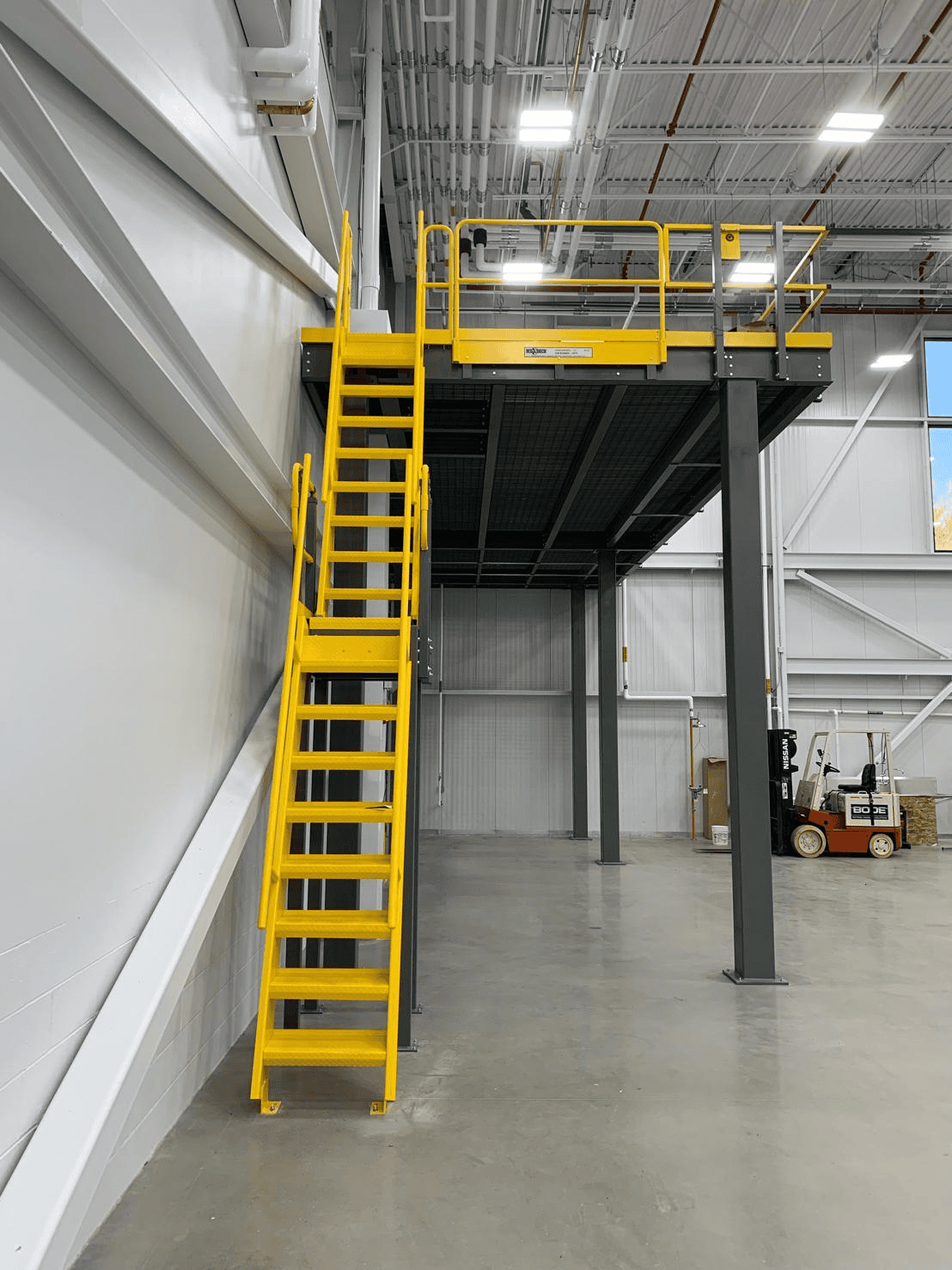
Full Mat Mezzanine (Rack Supported or Shelving Supported)
Pros
- More cost effective than Free Standing mezzanines by utilizing the storage media on the lower level as the upper‐level support structure
- Low profile aisle support joists (under 4” in most cases); great for limited clear height applications
- Lower level is independent of upper level allowing flexibility in storage media on each level (unlike a Catwalk Mezzanine)
- Free standing design which can offer a significant tax depreciation advantage rather than a structure attached to the building
Cons
- Can’t clear span as far as Free Standing Mezzanine can (typically 12’ or under)
- Sprinklers have to be mounted to the bottom of the beams/decking, which can obstruct clear height on the lower level
- More limited decking options than free standing (typically resin board, bar grating, or plank grating is used
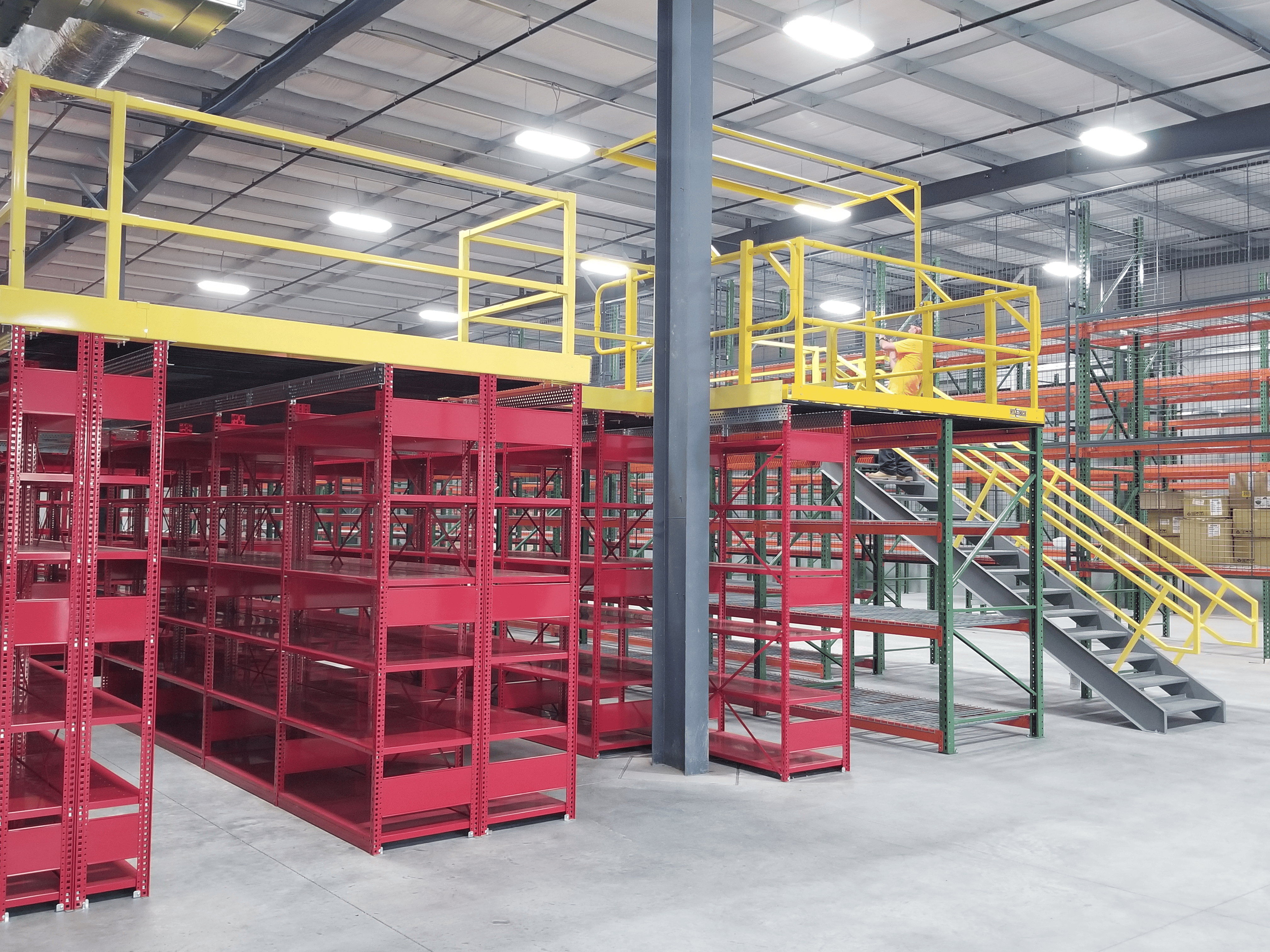
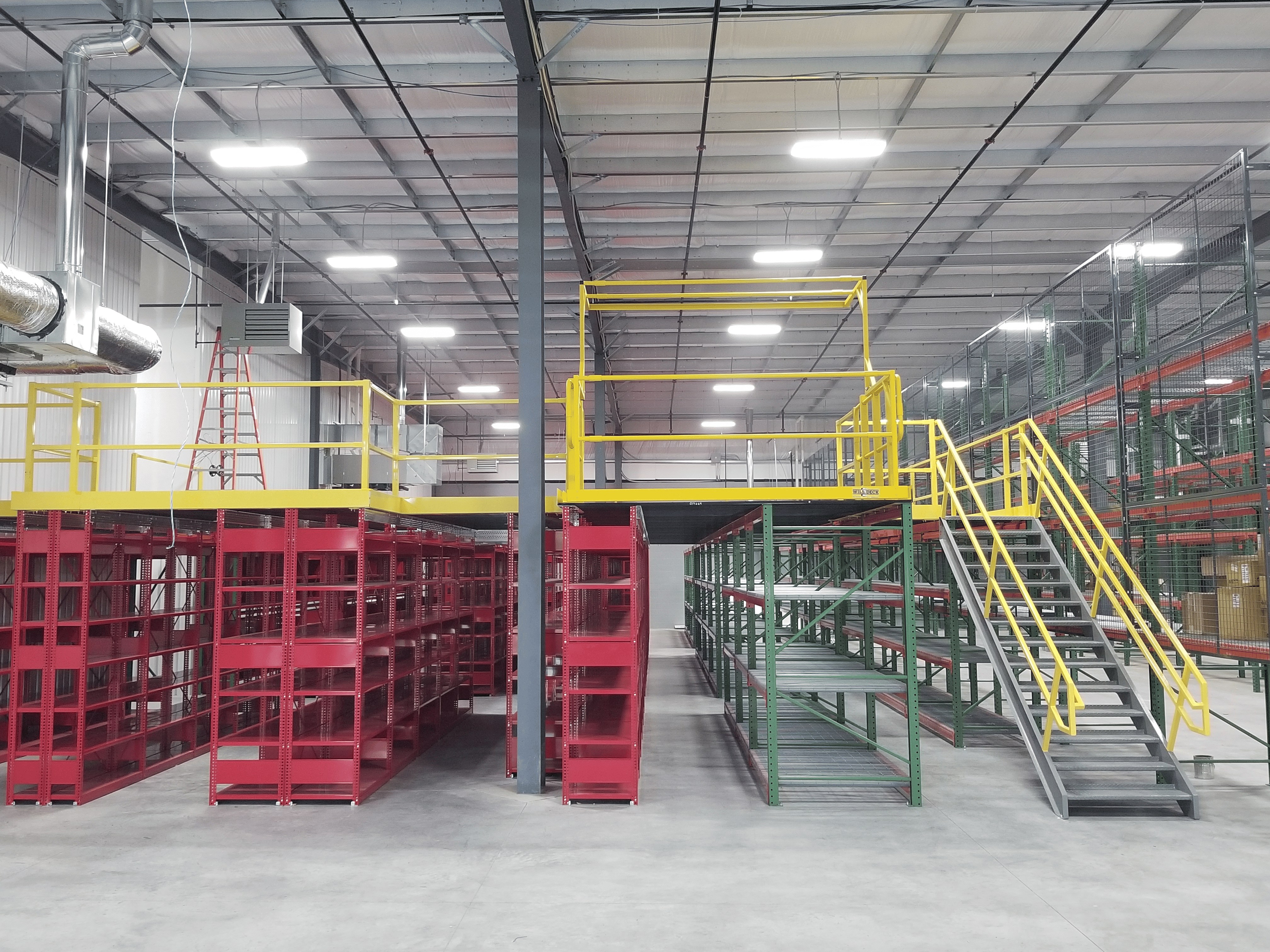
Catwalk (Rack Supported or Shelving Supported)
Pros
- Decking is only placed in the aisles, which allows it to be the most cost‐effective solution
- Low profile aisle support joists (under 4” in most cases); great for limited clear height applications
- Free Standing design can offer a significant tax depreciation advantage rather than a structure attached to the building
Cons
- Lower-level storage media has to be the same as the upper level, which does not allow for flexibility in storage sizes on each level
- Can’t clear span as far as Free-Standing Mezzanine can (typically 12’ or under)
- Sprinklers have to be mounted to the bottom of the beams/decking, which can obstruct clear height on the lower level
- More limited decking options than Free Standing (typically resin board, bar grating, or plank grating is used
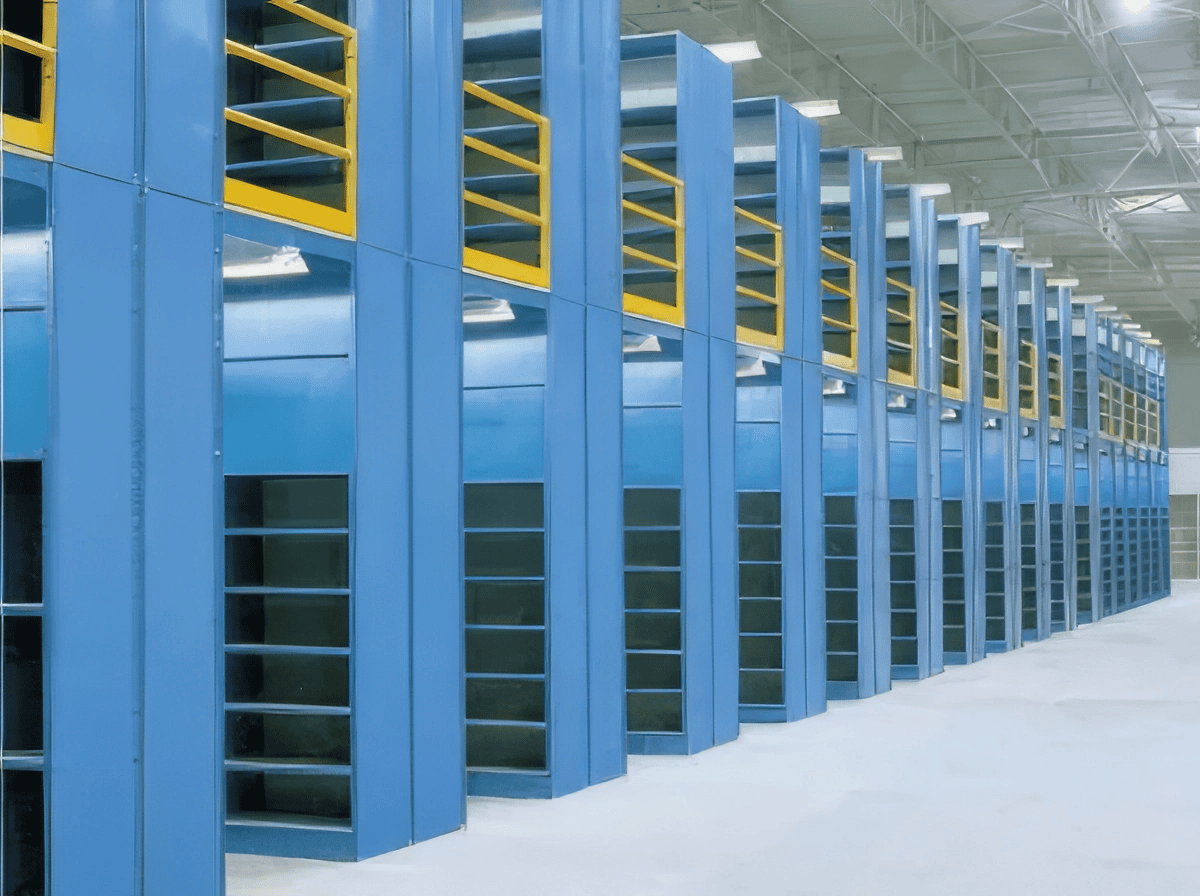
Industrial mezzanines are versatile and serve as practical solutions for optimizing space as they offer a creative way to enhance functionality without major construction to your current space. When you work with us, we’ll design and install a high-quality system. Let us know which type of mezzanine sounds best to you! Reach out to 1-800-875-6201 for more info.

 US Dollar
US Dollar
